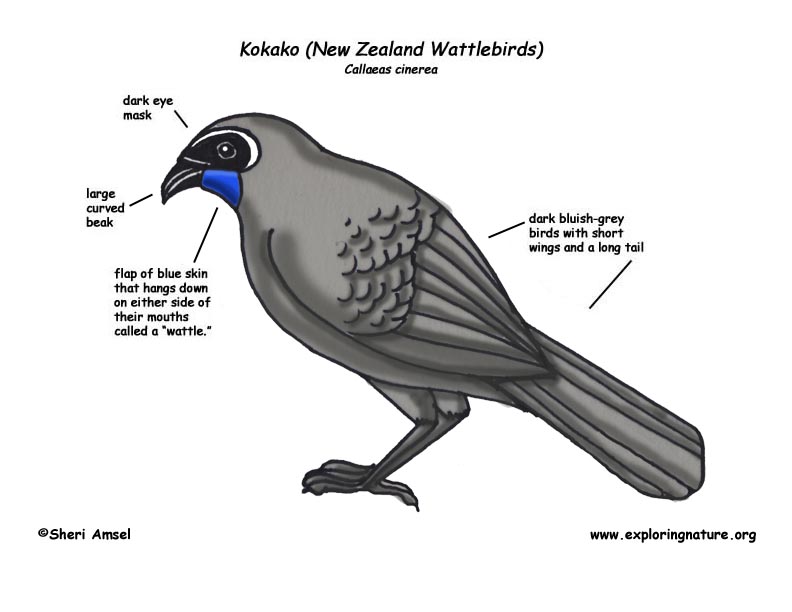

They are found on the North Island of New Zealand.
They live in dense forests.
They are dark bluish-gray birds with short wings and a long tail. They have a dark eye mask and a long, curved beak. There is a flap of blue skin that hangs down on either side of the mouth called a "wattle". They are the size of a domestic pigeon with long legs.
They move by hopping around on long legs and can only fly short distances. They are territorial, announcing their territory with a distinctive song.
They are omnivorous, eating plants, fruit, nectar and insects.
Mating pairs sing together and build a strudy nest high in a conifer. Mated pairs usually stay together for life. The female lays 1-3 eggs and incubates them (keeps them warm) while the male find food and brings it back to the female. One the chicks hatch they parents take turns bring food back to the nest.
It is though that they can live up to 25 years. Their population is very endangered due to predation from invasive mammals, such as rats and possums.
Kingdom: Animalia
Phylum: Chordata
Class: Aves
Order: Passeriformes
Family: Callaeidae
Genus: Callaeas
Species: C. cinerea
When you research information you must cite the reference. Citing for websites is different from citing from books, magazines and periodicals. The style of citing shown here is from the MLA Style Citations (Modern Language Association).
When citing a WEBSITE the general format is as follows.
Author Last Name, First Name(s). "Title: Subtitle of Part of Web Page, if appropriate." Title: Subtitle: Section of Page if appropriate. Sponsoring/Publishing Agency, If Given. Additional significant descriptive information. Date of Electronic Publication or other Date, such as Last Updated. Day Month Year of access < URL >.
Amsel, Sheri. "Kokako" Exploring Nature Educational Resource ©2005-2024. December 13, 2024
< http://exploringnature.org/db/view/Kokako >
